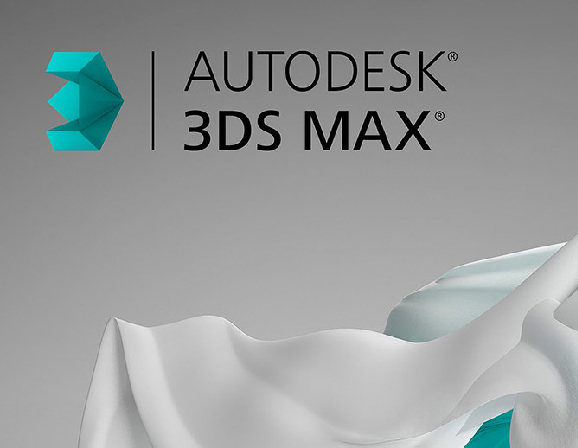Pascal language – was created by Professor Niclaus Wirth in1971. It was named for the honor of Blaise Pascal and in a little while became a programming language used at universities.
Due to some features of Pascal language, it leaded to wide application of Pascal programming language in business and industry.
Features of the language
Pascal programming language is essential for beginners. It is recommended to start with this programming language for beginners.
- The syntax of Pascal language is very simple and easy to understand.
- System and installation essentials are very few for both compilers and the programs written in it.
- Via Pascal you can write any program.
- Pascal programming language is OOP language.
| ADO.NET Application
| |
| Lesson 1. SQL-Server (About queries). In this lesson the structure of database will be taught. The creation reasons of bases are displayed. The table view of information. The creation process of the first database. Syntax writing of SELECT command. The structure of WHERE clause construction. | |
| Lesson 2. SQL Server commands. During the lesson, properties of important commands considered for work with database are taught. The application of INSERT, UPDATE, DELETE, LIKE , ORDER BY , DESC OR ,AND , NOT commands are shown. | |
| Lesson 3. Base with several tables. Connection among tables. Addition of new tables. Providing PRIMARY KEY and FOREIGN KEY identification and contact keywords in tables. Sending contact queries to the tables at the same time. Use of LEFT JOIN, INNER JOIN, RIGHT JOIN contact operators. The differences of these operators. | |
| Lesson 4. About ADO.NET. During the lesson, fundamental ADO.NET objects considered for collecting and processing information in database. The application of information processors considered for work with datarow, datacolumn, datatable objects. Implementation of contact protocols used in creating Dataset and datatable, as well as providing functionality | |
| Lesson 5. Contacts. Managing providers. Displaying information in WinForms type projects. During the lesson, base connection is created via program means. ADO.NET objects are applied for displaying and processing information in main tables. The explanation and application of SqlAdapter, SqlParameters concepts. We provide connection to information sources via ListBox and ComboBox list type management objects. The properties of DataSource, DisplayMember, ValueMember objects are touched upon. | |
| Lesson 6. Use of DataGridView element for displaying information in WinForms type projects. Use of Sql-Command object. Connecting information source of DataGridView management element with DataSource. Use facilities of CurrentRow property. We realize optimization of connection to base. | |
| Lesson 7. Creating information finder. Identifying information to be searched. Creating TextBox objects according to searching criteria. Searching among DataGridView elements. Setting information finder with correct application of DataGridViewRow.Cells[] property and loop operators. Increasing search speed via optimization of SQL queries. | |
| Lesson 8. Repetition of previous lessons. Creating Phonebook program by using ADO .NET facilities, based on all taught materials. Creating Hotel management program by using ADO .NET facilities, based on all taught materials. | |
| WEB Application ( ASP.NET 4.0 ) | |
| Lesson 1. ASP.NET basics. During the lesson, directions are given about basics of creating Web-projects. Students are instructed about Web-Service, Web-Bowser and HTTP protocols, as well as ASP.NET structure and basics of server-client technology. First simple Web project is created during the lesson. | |
| Lesson 2. Basic server type management elements. During the lesson, students get instructed about creating basic server type management elements, its properties and events. Besides, changing view type of page and management elements is displayed. Button, TextBox, Label, CheckBox, Image, Panel, Literal, Calendar management elements are added and properties are taught. | |
| Lesson 3. Use of ASP.NET tables. Applying validator check. During the lesson, properties of table type management elements are analyzed. Adding management elements such as ASP.NET Table, HTML Table, ImageButton, Hyperlink, LinkButton, BulletList and Validator and assignment of events are realized. | |
| Lesson 4. List type management elements. In most web projects, using list type information is essential. During the lesson, students get instructed about properties and events of this type elements. The application of list type management elements such as BulletedList, RadioButtonList, CheckBoxList ,ListBox ,DropDownList is displayed. | |
| Lesson 5. AJAX technology basics. Navigation. Creating MasterPage pages. During the lesson, students get instructed about basics of AJAX (Asynchronous JavaScript And XML) technology and main controls used by this technology. Properties of UpdatePanel, Timer, Menu, TreeControl management elements are taught. Creating Master Page type template pages. Applying Captcha defense system against bots attacks. | |
| Lesson 6. Saving project indicators. Work with XML files. Information about ViewState, Session, Cookie, Application functions considered for saving the current state of the project. Creating and editing XML type documents. System. Using facilities of XML library. | |
| Lesson 7. Applying Cryptographic algorithms. Work with files. MultiView. Using cryptographic algorithms in information security. Basics of symmetric cryptographic algorithms. Applying DES, TripleDES symmetric cryptographic algorithms. Using asymmetric cryptographic algorithms. The importance of using MD5, SHA asymmetric cryptographic algorithms. Using StreamWriter and StreamReader while working with files. Applying MultiView management element and its properties. | |
| Lesson 8. ASP.NET köməkliyi ilə .NET-ə Flash texnologiyasının inteqrasiyası . Creating first photo album in ASP.NET projects via Wondershare Flash Gallery program. Advantages of Wizard Control management element. Making different configurations to ASP .NET project via Web.config file. | |
| Lesson 9. Connections. Management providers. Displaying information in ASP.NET projects. During the lesson, base connection is realized via program means. For viewing and processing of information in main tables, ADO.NET objects are applied. Explanation and application of SqlAdapter, SqlParameters concepts. Providing connection to information sources via ListBox and ComboBox list type management objects. Students get instructed about properties of DataSource, DisplayMember, ValueMember objects. | |
| Lesson 10. Using GridView element for displaying information in ASP.NET projects. Using Sql-Command object. Connecting information source of GridView management element via DataSource. Using facilities of CurrentRow property. We realize optimization of connection to base. | |
| Lesson 11. Creating information finder. Identifying information to be searched. Creating TextBox objects according to searching criteria. Searching among GridView elements. Setting information finder with correct application of GridViewRow.Cells[] property and loop operators. Increasing search speed via optimization of SQL queries. | |
| Lesson 12. Displaying photos in GridView element. Building Image column in GridView. System. Using Drawing library. Editing and saving images. Changing the format and type of the image. | |
| Lesson 13 . HTML. Creating dynamic tables via HtmlControls. System.Web.UI. Applying HtmlControls library. HTML. Creating program for viewing information in databse in special dynamic tables via HtmlControls. | |
| Lesson 14. Repetition of previous lessons. Creating СarSales program by using ADO .NET facilities, based on all taught materials. | |





